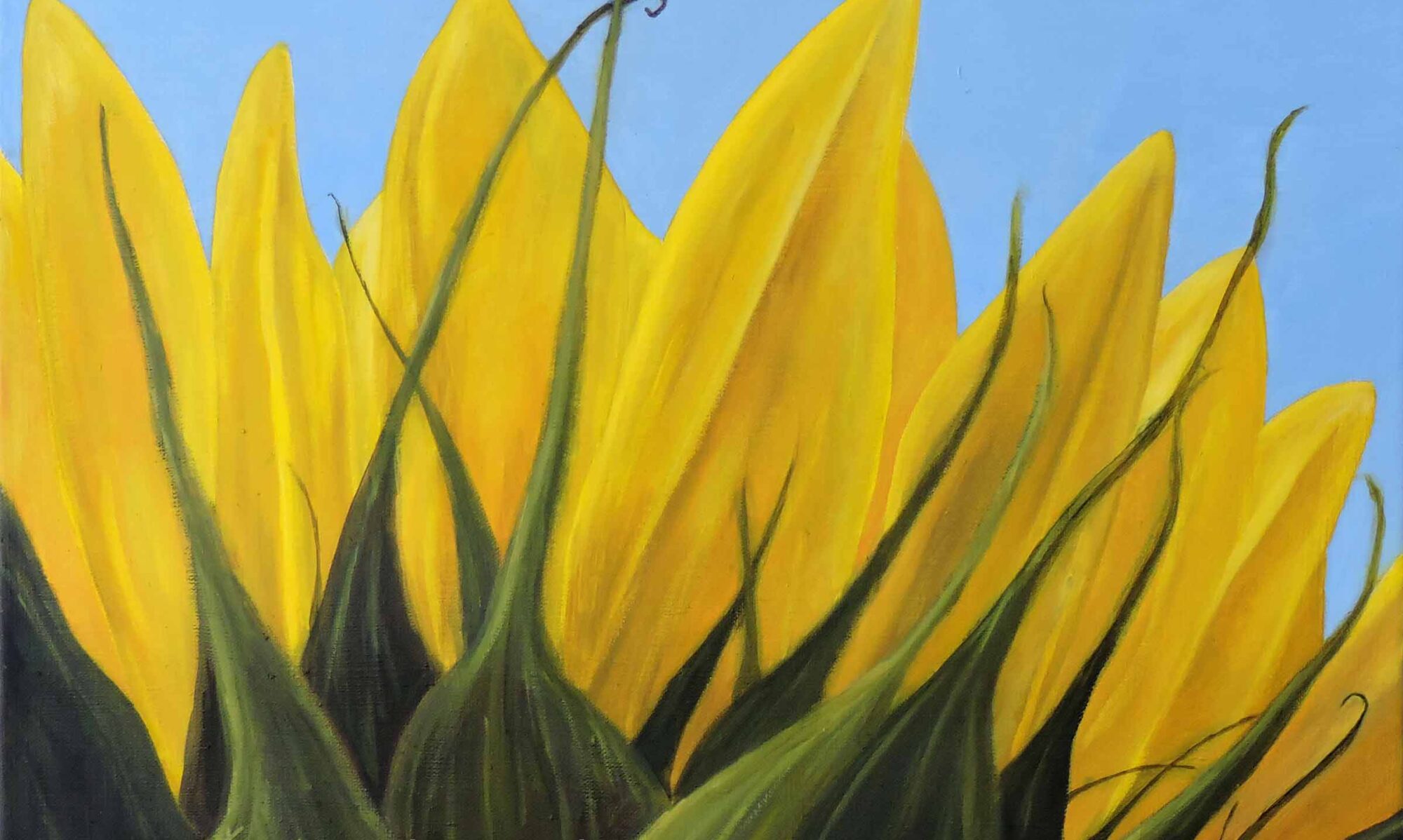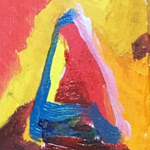
ABC ART | AUTOMOTIVE ARTIST
Quick links to more art terms and definitions are located at the end of the list.
ABC Art
(Visual arts: painting. Art movement: United States, 1960s. Also known as: minimal art, minimalism.)
An art style characterized by the use of simple, modular forms reduced to their elementary geometric structure.
Abstract Art
(Visual arts: painting and sculpture. Also known as nonfigurative art.)
A genre of art that refers to compositions derived (or abstracted) from a figurative or other natural source. Abstract art often starts with something recognizable—a person, an object, a landscape, or even a concept. The artist then engages in a creative dance. They distill, simplify, and transform that initial subject matter. Abstract art distorts or transforms recognizable things, like a playful remix of reality.
Abstract Expressionism
(Visual arts: painting. Art movement: Centered in New York City, 1946 to 1960.)
Art that rejects true visual representation. It has few recognizable images with great emphasis on color, line, shape, texture, and value, putting the expression of the feelings or emotions of the artist above all else.
Abstract Still Life
(Visual arts: painting.)
A type of painting that combines the traditional elements of a still life with abstract techniques. Instead of focusing on realistic representation, abstract still life emphasizes shapes, colors, and forms to convey the essence or mood of the subject. Some key characteristics are:
-
- Simplification: Objects are often reduced to their basic shapes and forms, stripping away intricate details to highlight their fundamental structure.
- Color and Texture: Artists use bold colors, varied textures, and unconventional materials to create a dynamic composition.
- Imagination and Interpretation: The viewer is encouraged to interpret the artwork in their own way, as the abstract nature leaves room for personal interpretation.
Academic Art
(Visual arts. Art movement: Europe, 19th century.)
A style of painting and sculpture heavily influenced by nineteenth-century European academies of art, especially the French academy. The academies were very conservative, resisting avant-garde innovations and expressions of modern art.
Accent
To stress, single out as important. As applied to art, it is the emphasis given to some aspects of a painting that allows them to attract more attention. Details that define an object or piece of art.
Accented Analogous
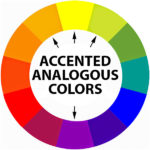
An accented analogous scheme, also known as analogous complementary, is a color scheme that combines analogous and complementary colors. It involves colors adjacent to each other on the color wheel and the color opposite them. The direct complement becomes the accent color, creating a dynamic contrast against the dominant color grouping. This is a great way to add warmth to a cool analogous color pallet or a cool accent color to an otherwise warm color scheme.
Achromatic Color
Colors that lack hue and saturation, meaning they don’t have a dominant color. These colors include black, white, and shades of gray. (See the illustration below.) They are considered neutral and are often used to create a balanced and timeless look in various forms of art and design.
![]()
Acrylic Paint
A fast-drying synthetic medium derived from acrylic resin. Acrylic is a water-based “plastic” paint valued for its versatility and clean-up using soap and water. Although soluble in water, acrylics become resistant to water once dry. The appearance of an acrylic painting can mimic that of a watercolor or an oil painting, depending on the thickness of the application on the canvas.
Action Painting
A technique or style of abstract painting characterized by the spontaneous splashing, throwing, or pouring of paint onto the canvas, as opposed to precise application. It is associated with artists who employed vigorous, sweeping gestures involving significant body movement, diverging from conventional easel painting techniques. Jackson Pollock was a notable figure in this movement. The terms “action painting” and “abstract expressionism” are often used synonymously by some critics.
Advancing Colors
(Opposite of receding colors.)
Hues that appear to come forward or advance towards the viewer in a composition. They create a sense of closeness and can make elements in a painting or design stand out more prominently. Advancing colors play a fascinating role in creating visual depth and proximity within a composition.
Advancing colors are warm colors and typically include shades of red, orange, and yellow. These colors are known for their energizing and invigorating qualities. When used in a painting or design, they appear to move toward the viewer, effectively decreasing the perceived distance between the viewer and the surface where these hues are applied.
Aerial Perspective
Refers to creating a sense of depth in a painting by imitating how the atmosphere makes distant objects appear less distinct and more bluish than they would be if nearby. Artists attempt to mimic this effect to create depth or distance (three dimensions) on an otherwise two-dimensional (flat) surface. Also see “atmospheric perspective.”
Aerial View
Refers to the act of observing from a high altitude, such as from an airplane or satellite, this perspective typically involves looking directly down, providing a comprehensive overview of the landscape. While commonly used interchangeably with “bird’s-eye view,” there are subtle distinctions between the two terms.
Aerography
Airbrush
A small, air-operated tool used by artists to apply color to surfaces. The hand-held device is connected to a canister of compressed air and sprays liquid paint, ink, dye, or foundation in a controlled manner. The airbrush works by breaking the liquid into tiny droplets through a process called atomization and distributes it across the painting surface. Airbrushes are known for their ability in making it possible for artists to create intricate details and beautiful color gradients in their art.
Airbrush Artist
A creative individual who uses airbrushes to create airbrushed art. Airbrush artists are versatile painters who create unique and intricate designs on a wide range of surfaces, including canvases, automobiles, clothing, helmets, handbags, skin and fingernails, and even cakes and pastries. With practice and dedication, airbrush artists can create incredible works of art that resemble actual photographs.
Airbrushing
A painting technique that uses an airbrush to create an even surface, allowing artists to achieve high levels of realism. It involves seamless color blending and softly defined edges between colors. Skilled airbrush artists can produce photographic realism or simulate various painting mediums, and it is commonly used in various fields like cars, motorcycles, models, textile design, printing, toys, glass, and ceramics.
Aliasing
(Also known as jaggies.)
A visual phenomenon that occurs when a sampled representation of an image exhibits undesirable artifacts or distortions. These artifacts typically appear as jagged or “stair-stepped” edges, especially on slanted or curved lines.
Digital images are composed of tiny individual pixels. When straight lines or curves are displayed at angles or diagonals, the limited number of pixels can’t accurately represent the smoothness or fine details. The result? Those pesky jaggies that make graphics look less polished and realistic. See “anti-aliasing” for further explanation.
Alla Prima
Aso known as ‘wet-on-wet’ oil painting, or direct painting. Alla prima is a technique of oil painting in which the desired effects of the final painting are achieved in the first application of paint as opposed to the technique of covering the canvas in layers with the final painting being achieved at the end. Alla prima is an Italian term that means “first attempt.”
Allover Painting
A composition with no focal point where all parts of the canvas are painted with equal care and significance, ensuring that each area of the composition is equally important.
Altarpiece
A work of art, such as a painting, sculpture, or relief, depicting a religious subject (holy personages, saints, and biblical subjects) that decorates the space above and behind the altar in a Christian church.
American Abstract Artists (AAA)
An artists’ association that was established in New York City in 1936 to promote and raise public awareness and appreciation of abstract art throughout the country. The organization does this through lectures, publications, and exhibitions, making it an important forum for idea exchange and presenting abstract art to a larger audience. Go to the AAA website to learn more about the organization or to sign up as a member.
American Scene Painting
(Visual arts: painting. Art movement: United States, 1925-1945. Also known as: Regionalism.)
A significant art movement in the United States, emerged during the Great Depression as a reaction against European Modernism. It utilized American imagery to chronicle and exalt rural and small-town America. The movement consisted of two distinct styles: American Regionalism, which celebrated rural life, and Social Realism (Urban Realism), which depicted urban scenes with political undertones. Artists of American Scene Painting aimed to capture the spirit of different regions and social groups, raising awareness about the struggles of working-class people.
Analogous Colors
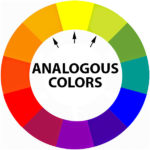
Any set of three or five colors that are closely related in hue(s). They are usually adjacent (next) to each other on the color wheel. One is the dominant color with two supporting colors. The effect of this color scheme can be pretty dramatic as these hues usually work very well together in creating a sense of unity or harmony within the composition. Using this color scheme, choose one as the dominant color (usually a primary or secondary color), a second color to support, and a third as an accent.
Animal Still Life
A type of still life painting that incorporates animals with other still life elements such as fruits, flowers, and household objects to create a rich, detailed composition. These paintings typically feature animals that are either alive or dead, and they can include a variety of subjects such as game, pets, or even exotic creatures.
Animalier
An artist who specializes in the realistic portrayal of animals. This term is most commonly associated with 19th-century sculptors and painters who focused on creating detailed and lifelike representations of animals. The work of animaliers often includes small-scale sculptures, particularly in bronze, and paintings that capture the essence and anatomy of various animals.
Anti-aliasing
A technique used in computer graphics to reduce the distortion caused by aliasing. Aliasing occurs when viewing images or playing games on lower-resolution screens, resulting in jagged edges in diagonal lines or curves. Anti-aliasing smooths out these edges, making the image appear more realistic and visually pleasing. For further explanation, see “aliasing.”
Applied Art
The application of design and decoration to everyday, practical objects to enhance their aesthetic appeal. Applied art includes a wide range of artistic fields, including industrial, graphic, and interior design as well as architectural and fashion design.
Approximate Symmetry
The use of forms that are similar on either side of a central axis. They may give a feeling of exactness or equal relationship, but they are sufficiently varied to prevent visual monotony.
Architectural Art
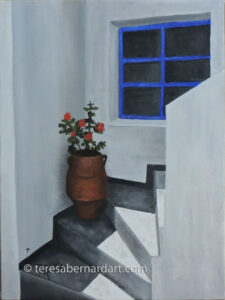
by Teresa Bernard
A form of visual art that focuses on the artistic representation and aesthetic interpretation of buildings and structures. It emphasizes the design, form, and stylistic elements of architecture, showcasing the beauty, creativity, and innovation involved in architectural design. Architectural art can include realistic depictions, imaginative renderings, and abstract interpretations, celebrating the artistic qualities of architecture.
Art
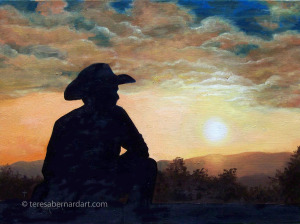
The completed work of an artist that expresses creativity, imagination, or both and usually takes the shape of a painting, drawing, or sculpture that conveys a mood, a sentiment, or a narrative. Art encompasses various mediums, genres, and techniques. Also, refers to works of art collectively.
Art Appreciation
An understanding of the qualities that identify all great art. It involves having a knowledge of art movements, art history, and art styles or techniques. For more information on this topic, see blog article “What is art appreciation?”
Art Brut
(French for “raw art.”)
A term coined by the artist Jean Dubuffet in the 1940s. It describes art created outside the traditional boundaries of the art world, often by self-taught or untrained artists. This includes works by individuals such as the mentally ill, prisoners, children, and others who create art without formal training.
Art Buyer
A professional responsible for purchasing artwork on behalf of an organization, company, or individual. Art buyers must have a high degree of art knowledge and understanding to appraise the quality and value of the artwork.
Art Cards, Editions, and Originals (ACEO) Cards
ACEOs are tiny handmade original paintings measuring 2.5 in x 3.5 in, the size of a sports trading card. They are created to sell on eBay and other venues and are highly collectible. Also see, “artist trading cards” for additional information.
Art Collector
A person who buys original and rare works of fine art with an interest in the history or story behind those pieces. They often buy in one or more genres, such as artists, art movements, or subject matter. In addition to appreciating and enjoying great work, art collectors also contribute to the financial support of the artists who produce it.
Art Collection
An accumulation of artwork by a private individual or a public institution. Art collecting has its roots in history. Most of the world’s art museums originated from large private collections that affluent individuals, royalty, aristocrats, or monarchs acquired.
Art Conservation
The maintenance and preservation of artworks and their protection from future damage and deterioration. Art conservation focuses on preventive measures and maintaining the original condition of artworks.
Art Critique
The analysis and evaluation of a work of art. It involves examining the elements and principles of art used in a piece, as well as considering the artist’s intentions and the overall impact of the artwork on the viewer. In essence, art criticism seeks to understand a particular work of art from a theoretical perspective and establish its significance in the history of art.
Art Deco
(Visual arts: decorative art, design and architecture. Art movement: Western Europe and the United Sates, 1920s-1930s. Related to the Precisionist art movement. Also known as: Moderne, style moderne.)
A style of design and decoration that originated in Paris, France just before World War I. It is characterized by precise and sharply outlined geometric shapes and used vivid colors to reflect the rise of commerce, industry, and mass production. Art deco influenced the design of buildings, furniture, jewelry, fashion, cars, movie theatres, trains, ocean liners, and everyday objects such as radios and vacuum cleaners.
Art Exhibition
(Also called an art exhibit.)
A public showing of a piece or a collection of artworks. Art exhibitions allow artists to showcase their work to a wider audience. They serve as a platform for sharing artistic vision and ideas. Art exhibitions can take place in museums, galleries, art clubs, or even unconventional spaces like coffeehouses.
There are various types of art exhibitions:
-
- Commercial exhibitions: Often called art fairs, these showcase works by artists or art dealers. Participants usually pay a fee to participate.
- Non-commercial exhibitions: These can be organized by galleries, museums, or other institutions. They may display items from a museum’s own collection or feature works by multiple artists.
- Retrospectives: These look back at an individual artist’s body of work.
- Group shows: Exhibitions featuring multiple artists.
- Biennales: Large international exhibitions held every two years.
Art History
The study of the evolution of visual arts, including painting, sculpture, drawing, and architecture, from the earliest cave drawings to present day. Its primary objectives are to identify the creators of a particular work, their time and stylistic approach, and to understand their creative process.
Art Media
Refers to multiple materials or tools used in the creation of art. When an artist uses several different materials, they are working with various art media. Similar in meaning as the term “Art Medium”, however, “medium” is singular, and “media” is plural.
Art Medium
Refers to a single material or tool used by an artist to create their work. For example, oil paint, watercolor, graphite, and clay are all individual art mediums. Similar in meaning as the term “Art Media”, however, “medium” is singular, and “media” is plural.
Art Movement
A distinct style of art defined by a group of artists who practice or adhere to the same creative concept, philosophy, goal, style, or method across a specific time period or place. Each art movement is subtly or distinctly different from another. Some movements share similarities with others, while others defy them.
Art Museum
A public or private place that collects and exhibits art from the museum’s own collection. They usually specialize in artworks like paintings, drawings, sculptures, and photographs. Art museums also offer educational programs to enhance appreciation and understanding of diverse works of art from different historical and cultural periods.
Art Nouveau
(Pronounced noo-VOH. Visual arts: decorative art, architecture, and graphic design. Art movement: Europe and the United States, 1890s to 1910s. A French word meaning ”New Art.” Also known as: Modernismo, Modernista, Sezessionstil, Stile Floreale, Stile Liberty.)
An international art movement that emerged in the late 19th to early 20th century characterized by intricate linear designs and flowing curves, often incorporating delicate natural objects like flower stalks and buds, vine tendrils, and insect wings. The goal of Art Nouveau was to blur the lines between the fine and applied arts, and was widely used in interior design, graphic arts, furniture, glass art, textiles, ceramics, jewelry, and metal work. The popularity of Art Nouveau began to wane around World War I, and it was eventually replaced by the Art Deco style.
Art Period
A specific span of time during which a particular style, technique, or philosophy of art was prominent. These periods are often defined by art historians after the fact and can encompass multiple art movements that share common themes or goals. For example, the Renaissance is an art period that includes various movements and styles that emerged during that time.
Art Restoration
The repair of damaged or deteriorating artworks. Art restoration strives to restore items to a condition similar to their original appearance while preserving their artistic and historical value.
Arte Povera
(Pronounced: ahr-teh poh-veh-rah. Visual arts: sculpture. Art movement: Italy, 1967–1972. Italian for “poor art.”)
Arte Povera was a pioneering art movement of young Italian artists who sought to create a new sculptural style by incorporating unconventional and deliberately ‘poor’ materials such as paper, jute, wood, coal, rags, twigs, and other everyday materials into their artworks. They used such throwaway materials to attack and disturb the values of the marketed contemporary gallery system.
Artist
An individual who practices in the creation of visual arts, such as sculptures, paintings, or drawings, either as a profession or a hobby. Artists use their skills and creativity to produce works that express ideas, emotions, or a unique vision. They often push boundaries and explore new techniques and styles, contributing to the cultural and aesthetic landscape of their time.
Artist Brush
The primary tool used by artists to apply paint or ink onto various surfaces, such as canvas, paper, or wood. It’s essentially a brush with bristles attached to a handle. An artist brush comes in various types, sizes, and shapes. Also see “Brush.”
Artist Portfolio
A collection of an artist’s best works that demonstrates their style, artistic skills, creativity, personality, abilities, and commitment. Artists need a portfolio because it shows potential clients or employers what they are capable of and what they have to offer. See also Portfolio.
Artist’s Bridge
A tool used by painters to steady their hand while working on detailed sections of a painting. It’s typically a long, thin rod that rests on the edges of the canvas or easel, allowing the artist to support their hand without touching the wet paint. Also called a “Mahl Stick.”
Artistic
Refers to anything related to or characteristic of art or artists. It can describe someone who has a natural creative skill or talent, as well as something that is aesthetically pleasing or shows imaginative skill in its creation. For example, an artistic person might excel in painting, drawing, or other forms of creative expression. Similarly, an artistic work is one that demonstrates a high level of creativity and aesthetic quality.
Artistic License
Refers to the creative process where artists manipulate details to make their work more interesting or beautiful. It allows them some latitude in how they perceive a subject and is not strictly required to be accurate. Artistic license is sometimes used as a euphemism to describe the distortion or alterations made by an artist to improve a piece of art.
Artistic Style
The specific style or technique of a particular artist, or art movement. It’s that thing that makes you recognize a specific painting as being by a particular artist before you’re close enough to see a signature or to read the image label.
For more information, see the Artist Blog article titled Developing an Artistic Style of Your Own.
Artist Trading Cards (ATCs)
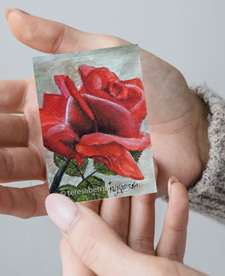
ATCs are tiny-sized original paintings created by artists strictly for handing out, swapping, or trading with other artists and are not intended for selling. They may be in any medium (oils, acrylics, pencil, ink, etc.) using any technique, whether painting, drawing, or collage. There is only one rule and that is the cards must adhere to a specific size, 2.5 in. x 3.5 in.
Arts and Crafts Movement (ACM)
(Visual arts: decorative arts. Art movement: Britain and international, late 19th and early 20th century. Also known as: English aesthetic movement.)
Originating in the British Isles, the ACM was an international decorative arts movement that aimed to reform design, promote handcraftsmanship, and assert individual crafts people’s creative independence. It spread across Europe and America, influencing various art forms such as furniture, textiles, ceramics, and architecture, and addressing perceived declines in design and craftsmanship due to industrialization.
ASCII Art
(Stands for American Standard Code for Information Interchange. Also called “Text Art.” See also 95 ASCII Characters.)
Text-based visual art created from 95 printable characters that use computers for presentation. ASCII art is created using any text editor program and requires a fixed-width font, such as Courier, for presentation. ASCII art can range from the whimsically minimalistic to intricate masterpieces. For more info.
Some Examples of ASCII Art:
Fish ><(((('>
Rose @-->--->---
Ocean Waves _.~"(_.~"(_.~"(_.~"(_.~"(Ashcan School
(Visual arts: painting and etching. Art movement: New York City, 1908 to 1913. Also known as: Ash Can School.)
The Ashcan School was a realist art movement in the United States, known for depicting everyday life in poorer neighborhoods of New York City. This group of artists challenged artistic conventions and celebrated the everyday, leaving an indelible mark on American art history. They sought to document turn-of-the-century New York City life through realistic and unglamorized paintings and etchings of urban street scenes. The spirit of the Ashcan School was continued in American Scene Painting of the 1920s and 1930s.
Assemblage Art
(Also known as found-object art or junk art.)
A form of sculptured art, either three-dimensional or two-dimensional, composed of “found” objects and arranged in such a way as to create a work of art. These objects can be anything organic or man-made. The origin of this particular art form dates back to Pablo Picasso, a well-known cubist artist.
Astronomical Art
A genre of art that focuses on visual representations of outer space, celestial bodies, and the vast universe beyond Earth. This art form combines elements of science, imagination, and creativity to depict the beauty and mystery of the cosmos. It includes various styles such as realism, impressionism, abstract imagery, and sculpture. Also known as “Space Art.”
Asymmetrical
(Opposite of symmetrical.)
Refers to a lack of symmetry or perfect balance, meaning that the two sides of an object or composition are not identical or mirror images of each other. In art, asymmetry is often used to create visual interest, movement, and dynamic compositions.
Asymmetrical Balance
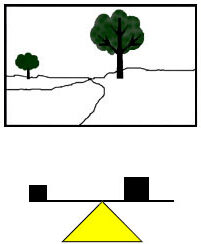
(Also known as Informal Balance.)
A composition technique where non-identical forms are arranged on opposite sides of a balancing point (central axis). By varying their size, value, or distance from the center, both sides will appear to have the same visual weight. A skilled artist can create visually appealing compositions by balancing elements and weight, utilizing asymmetrical balance for greater creativity and unlimited arrangements, allowing for a wider range of artistic possibilities. Also see Balance.
Asymmetry
(Opposite of symmetry.)
Refers to the lack or absence of symmetry. It can manifest itself in spatial arrangements, mathematical relations, or logical structures. Essentially, when something isn’t balanced or mirrored, we encounter asymmetry.
In art, asymmetry is a deliberate departure from the confines of perfect symmetry. Unlike symmetrical compositions, where visual elements mirror each other across a central axis, asymmetry intentionally disrupts this equilibrium. This creates a dynamic visual tension that captures our gaze, igniting a sense of curiosity and involvement.
Atmospheric Perspective
A technique used by painters to represent three-dimensional space on a flat, two-dimensional surface by creating the illusion of depth or recession within a painting or drawing. Atmospheric perspective suggests that objects closer to the viewer are sharper in detail, color intensity, and value contrast than those farther away. As objects move closer to the horizon, they gradually fade to a bluish-gray, and details blur, imitating how distant objects appear to the human eye. Also see “aerial perspective.”
Authentic Artwork
This refers to an original piece of art that is genuinely created by the artist it is attributed to. The term “authentic” indicates that the artwork is not a reproduction, fake, or counterfeit, but rather a unique creation made by the artist’s own hand. Authentic artworks often have documentation (provenance) verifying their origin and include the artist’s signature or identifiable marks.
Key Characteristics:
-
- Original Creation: Made by the artist themselves, not mass-produced or replicated.
- Provenance: Comes with documentation or history that verifies its authenticity and origin.
- Materials and Techniques: Created using the materials and techniques typical of the artist’s work.
- Signatures: Often includes the artist’s signature or other identifying marks that can be verified.
Authentic Oil Paintings
Original artworks created using traditional oil paints, typically on canvas or other suitable surfaces. These paintings are characterized by their use of oil-based pigments, which allow for rich, vibrant colors and a wide range of textures. Authentic oil paintings are valued for their craftsmanship, unique artistic expression, and the skill involved in their creation. They are distinct from reproductions or digital prints, as each piece is a one-of-a-kind creation by the artist. For more information see Authentic Oil Paintings—What Makes Them Genuinely Unique.
Automotive Artist
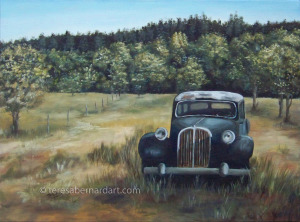
A skilled artist who specializes in drawing cars, capturing the beauty and essence of automobiles in their artwork. Using their artistic talent, they create various forms of art, including paintings, drawings, and sculptures, showcasing classic (vintage) cars, muscle cars, and sports cars. Their passion for cars often leads them to create art for car manufacturers, advertising agencies, and other businesses in the automotive industry.
You May Also Like
This glossary of art terms is provided as a valuable resource for art enthusiasts. If you like the information here and find it helpful, please consider purchasing a painting. Your support helps to cover the cost of keeping this art terms and definitions lexicon online. Simply click or tap the thumbnail link of any Teresa Bernard oil painting to view additional details.
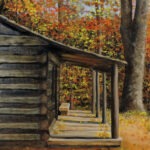
9″ w x 12″ h

6″ w x 8″ h
Art Glossary Quick Links
Contributing to The Art Dictionary
The art terms and definitions dictionary is a work in progress. New terms and definitions are added on a regular basis. If you know of an art term and definition that isn’t already listed in it, but you believe it should be, send it to us and we’ll consider adding it. We’ll let you know if we do. Thanks!
Your Feedback
“Beautiful art terms website!” — Sonya, Hollywood FL
Thanks for reading this!
